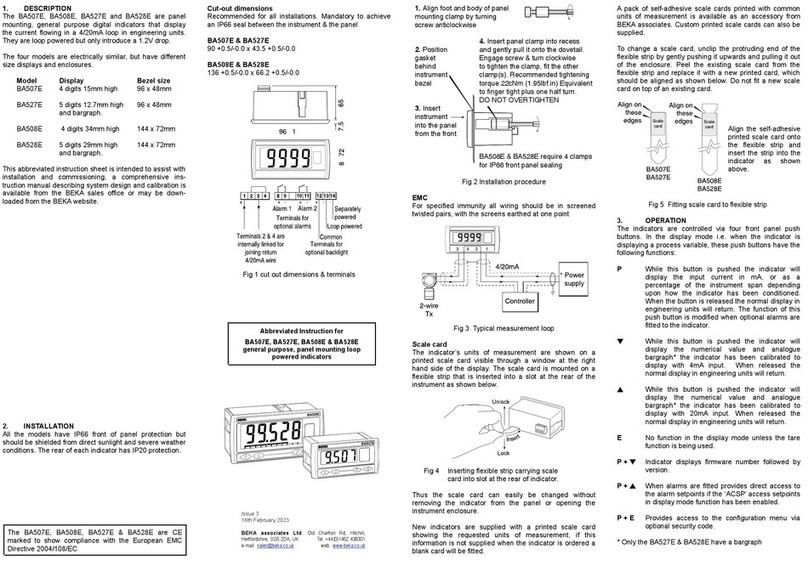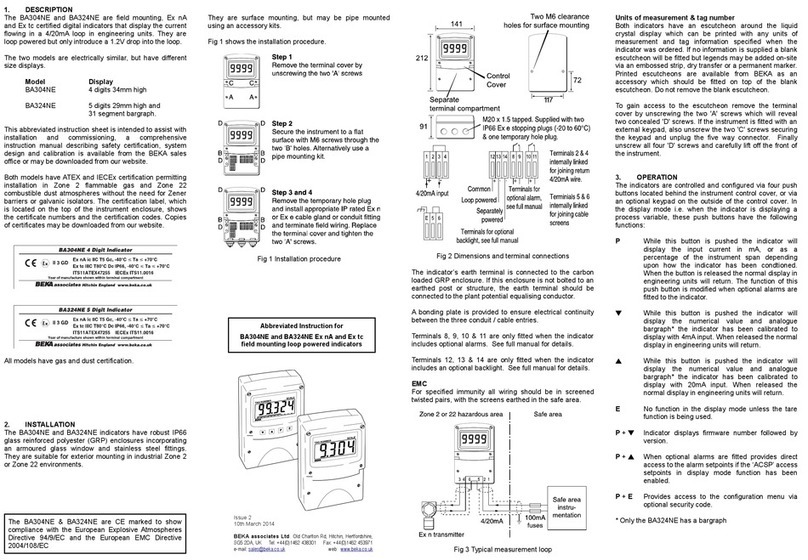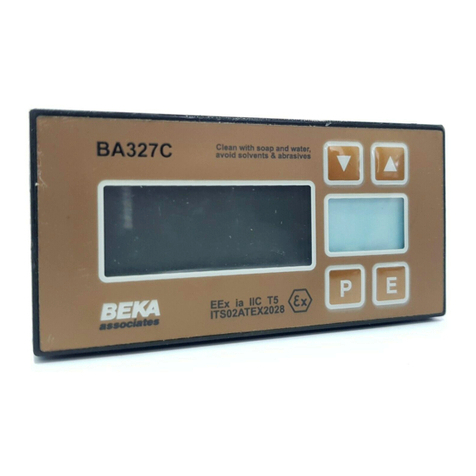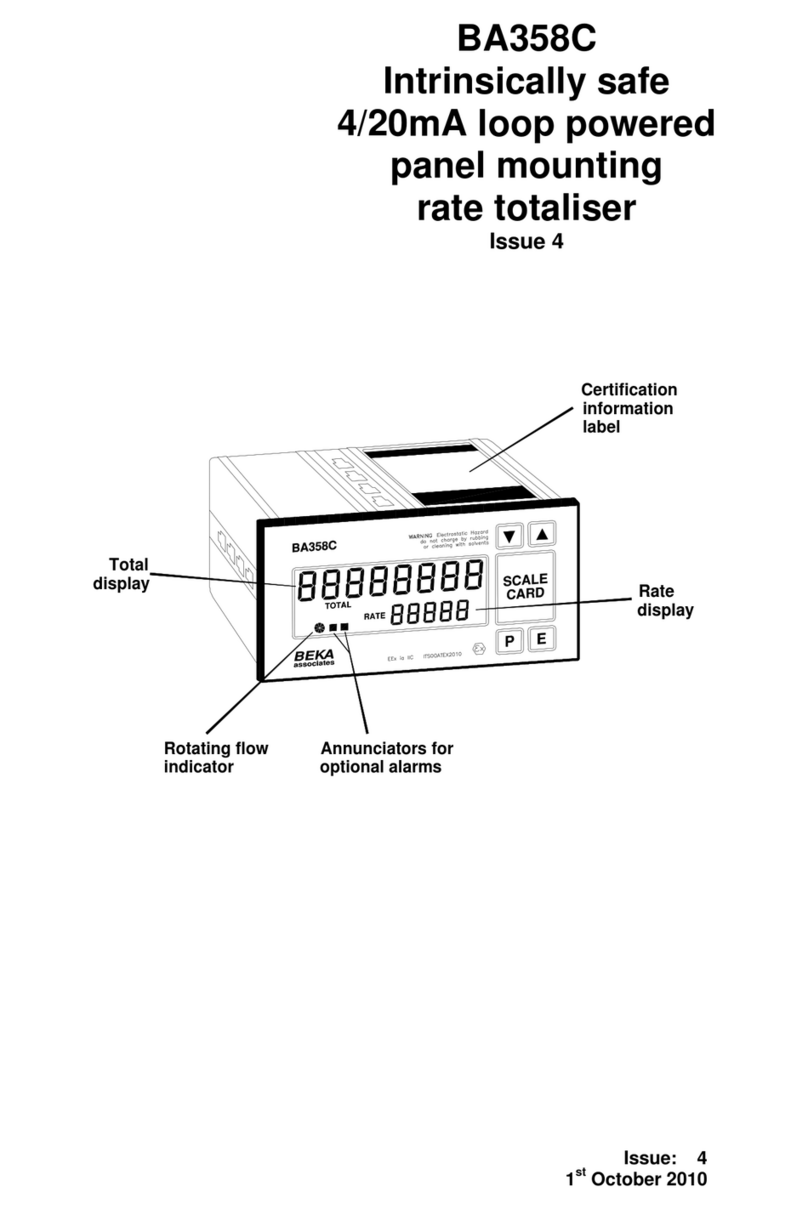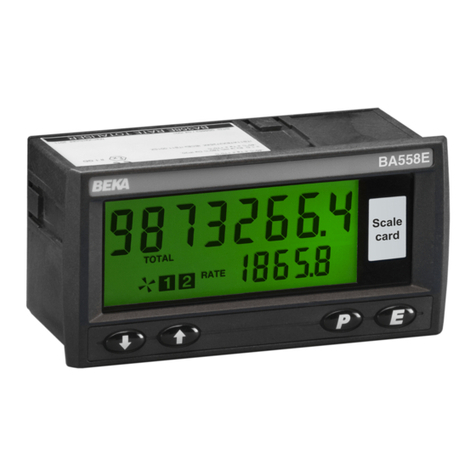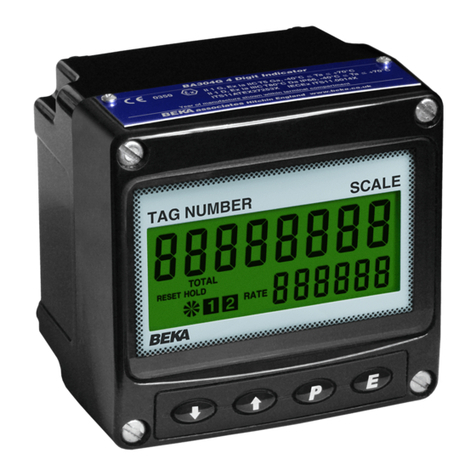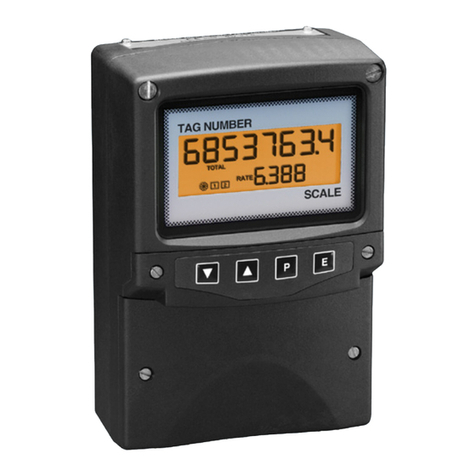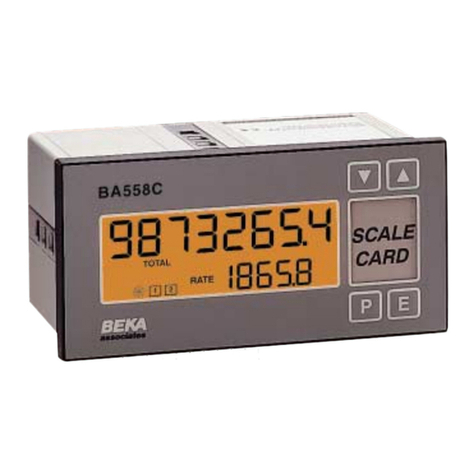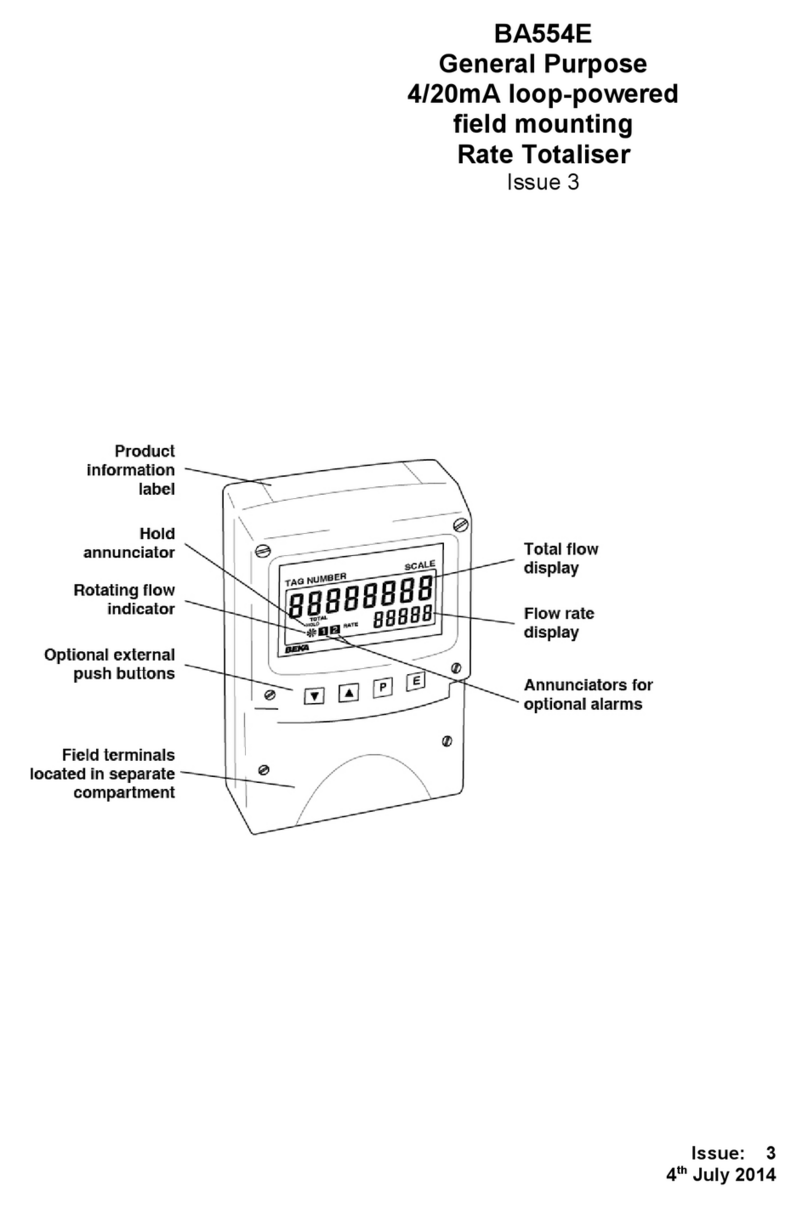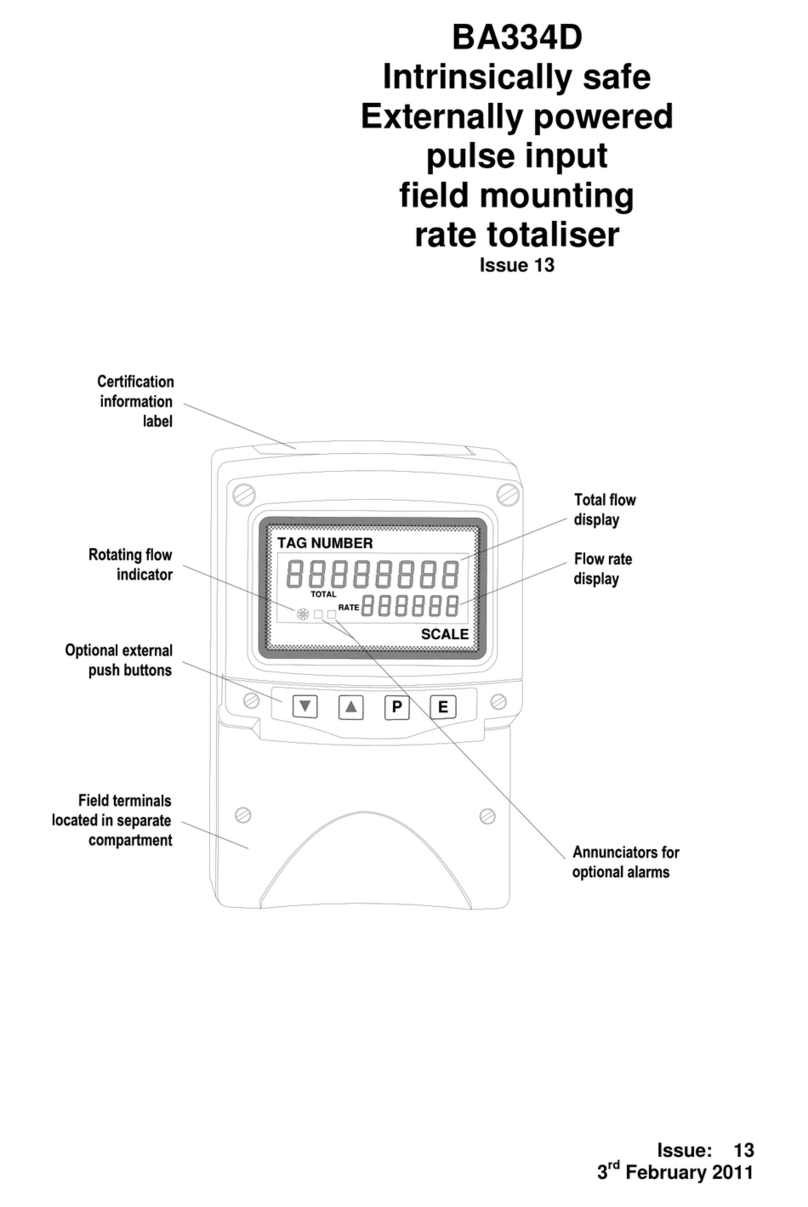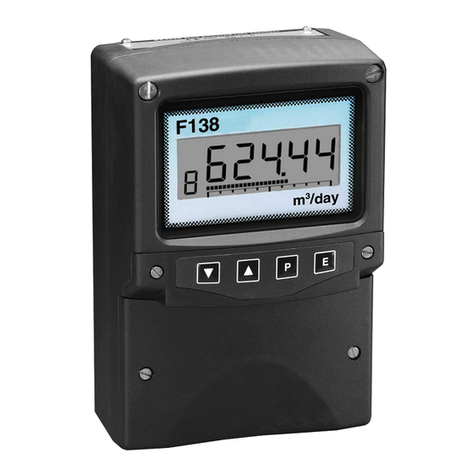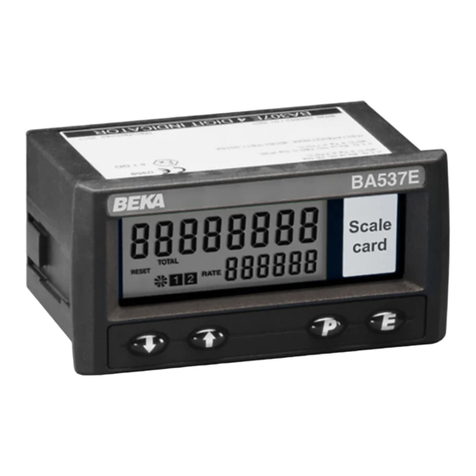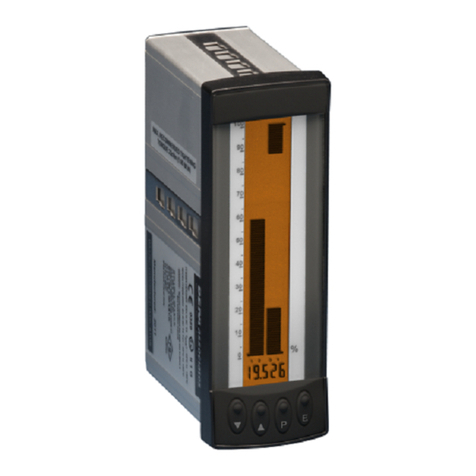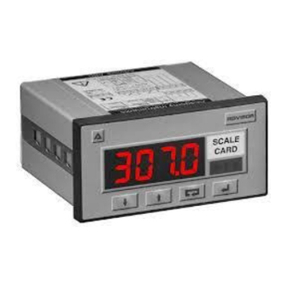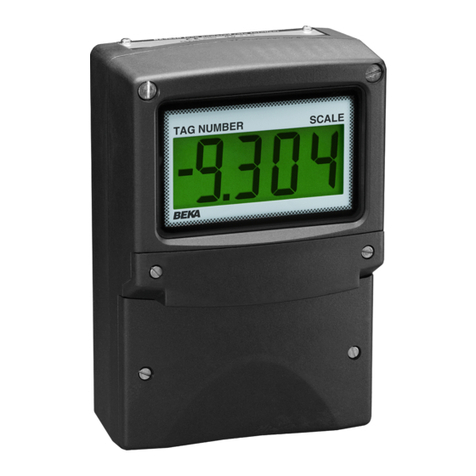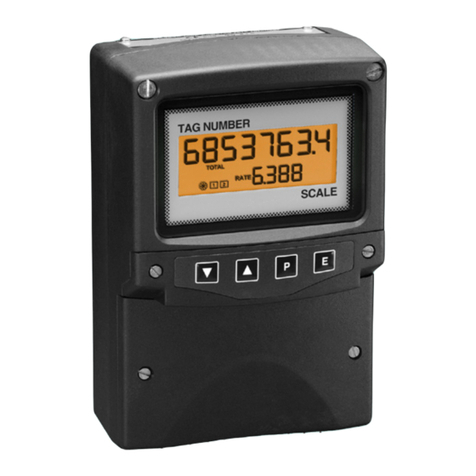4
2.1 Co trols
The indicators are controlled and calibrated via the
four front panel push button switches. In the
display mode i.e. when the indicator is displaying a
process variable, these push buttons have the
following functions:
(While this button is pushed the
indicator will display the input current in
mA, or as a percentage of the
instrument span depending upon how
the indicator has been configured.
When the button is released the normal
display in engineering units will return.
The function of this push button is
modified when optional alarms are
fitted to the indicator.
&While this button is pushed the
indicator will display the numerical
value and analogue bargraph* the
indicator has been calibrated to display
with a 4mAΦ input. When released the
normal display in engineering units will
return.
*While this button is pushed the
indicator will display the numerical
value and analogue bargraph* the
indicator has been calibrated to display
with a 20mAΦ input. When released
the normal display in engineering units
will return.
)No function in the display mode unless
the tare function is being used.
( + &Indicator displays firmware number
followed by version.
( + *Provides direct access to the alarm
setpoints when optional alarms are
fitted to the indicator and the ac5p
access setpoints in display mode
function has been enabled.
( + )Provides access to the configuration
menu via optional security code.
Notes: * BA327SE only
Φ If the indicator has been calibrated
using the CAL function, calibration
points may not be 4 and 20mA.
3. CERTIFICATION
Both models have IECEx, ATEX, UKEX, ETL &
cETL Ex ec increased safety gas certification and
Ex tc protection by enclosure dust certification.
The main sections of this instruction manual
describe IECEx, ATEX and UKEX gas certification.
Dust approval is described in Appendix 2 and
North American gas and dust certification in
Appendix 3.
3.1
IECEx, ATEX a d UKEX Ex ec gas certificatio
Testing and certification company Intertek Testing
& Certification Ltd have issued both indicators with
an IECEx Certificate of Conformity IECEx ITS
22.0023X, and a UKEX Type Examination
Certificate ITS22UKEX0609X. Similarly, testing
and certification company Intertek Italia S.p.A.
have issued both indicators with
an ATEX Type Examination Certificate
ITS-1 22ATEX34494X.
Both indicators carry the Community and UKCA
Marks, subject to local codes of practice, they may
be installed in any of the EEA member countries
and in the UK. The IECEx certificate allows
worldwide installation, either directly or as a means
to obtain local approval.
These instructions describe installations which
conform to EN 60079:14 Electrical installations
design, selection and erection. When designing
systems the local Code of Practice should always
be consulted. Fig 2 shows the certification
information label that is on the top of a BA307SE
indicator.
3.2 I creased safety protectio
Increased Safety Ex e protection applies additional
measures to provide increased security against the
possibility of excessive temperatures and against
the occurrence of arcs and sparks. The fifth edition
of international standard IEC 60079-7:2015
Equipment Protection by Increased Safety ‘e’
defines two levels of protection:
Ex eb EPL Gb
Equipment for installation in ones 1 or 2.
Ex ec EPL Gc
Equipment for installation in one 2.
Note: Ex ec supersedes Ex nA protection
following publication of the Ex n standard
EN IEC 60079-15:2019 which no longer
includes Ex nA protection.













